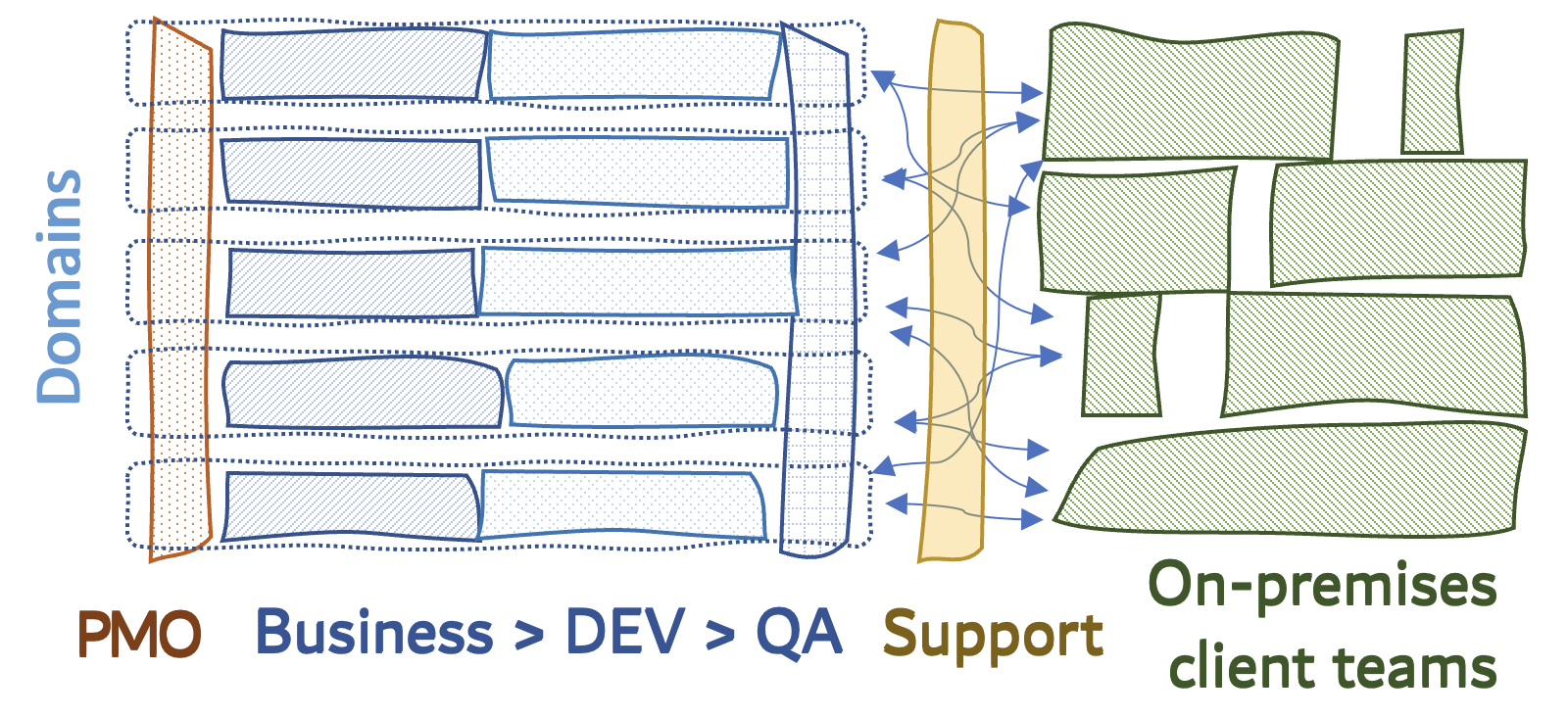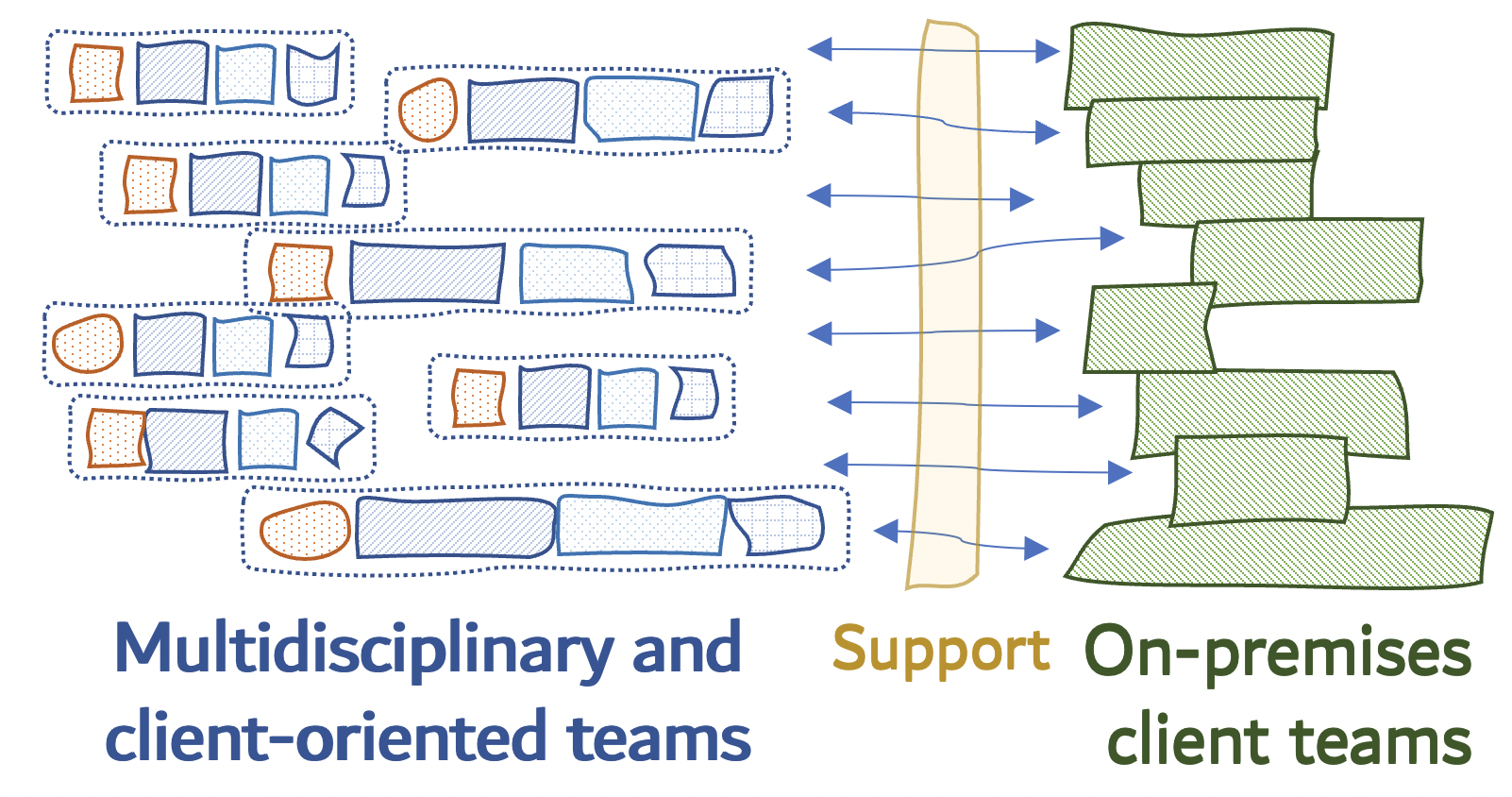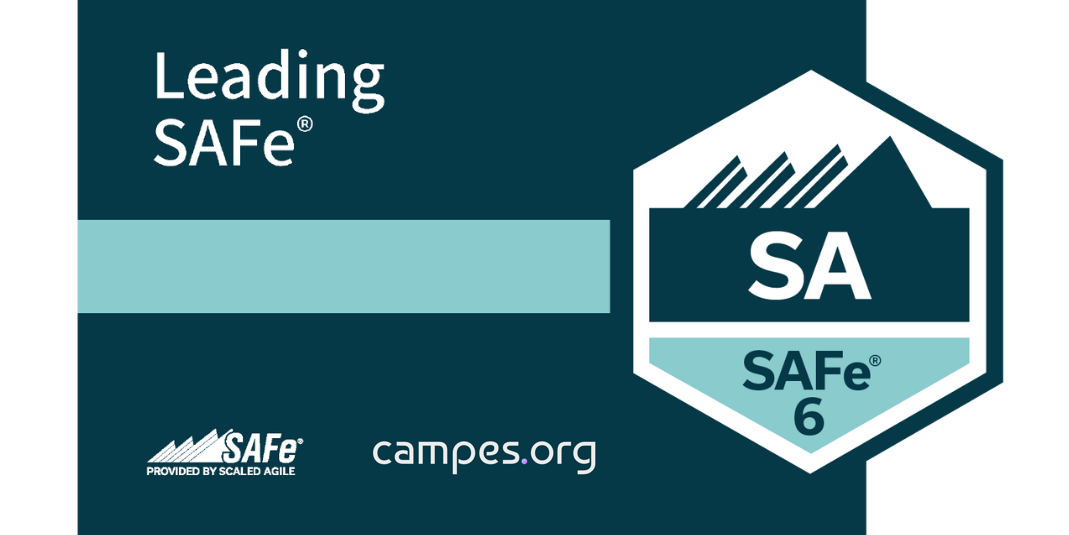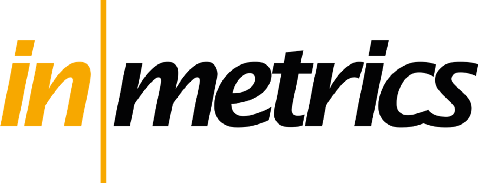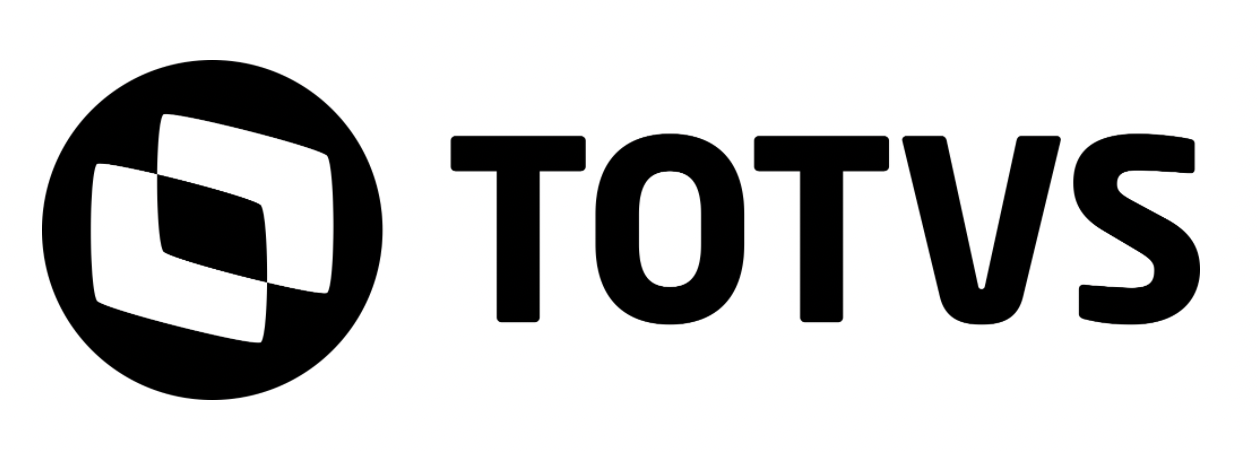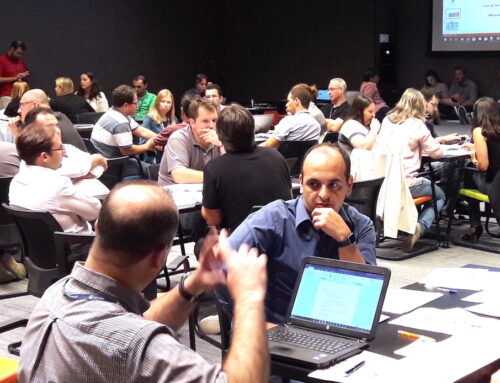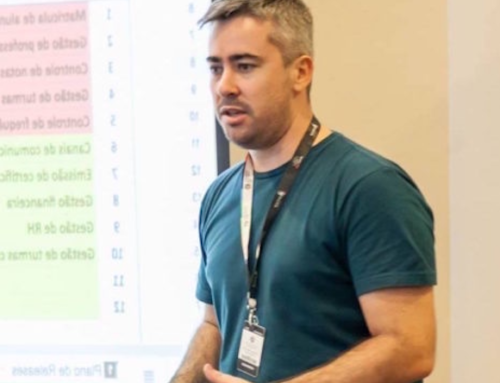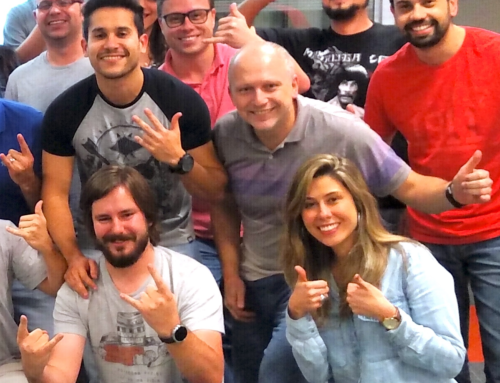Agile Transformation Challenge
With almost 2000 employees, Softplan is the largest IT company in the state of Santa Catarina, south of Brazil. It provides software solutions for the public sector in several areas, remarkably for the judiciary. Divided in three business units, the one focused on the public sector counts around 350 people. Back in 2014, that unit was tied in its business model, struggling to find the way out closed scope projects, delays and client dissatisfaction.
Scenario

The operations department were divided in 5 big software development teams, a common PMO with 10 project managers, a common customer supporting team with 10 people, plus around 50 business and support analysts allocated inside the main clients spread accros multiple states. Each “dev” team was composed by a set of leading business analysts which lead developers and QA analysts. Teams were domain-driven: each one provided a solutions for a major management area (e.g. administrative processes, engineering, financing, procurement…). Finally, this structure makes teams to share same customers among each other and customers, in turn, to be provided with same solution among each other.
Each team had to deal with several projects simultaneously and most of them had separated cells dedicated to post-project activities, like evolutive and corrective maintenance. A central PMO provided a common process to manage projects and a pool of project managers, which were not part of the team itself.
Project deadlines were met at the expense of several extra hours and by cutting technical quality, consequently compromising posterior maintainability. Between 30% and 40% of teams’ capacity was dedicated to handle a constant flow of incoming bugs, affecting teams morale and increasing turn over. Moreover, after each new implementation project, teams were dismantled and new ones were formed for the next project, mining any remaining feeling of ownership.
“We’ve reached a point of no return! After the big deliveries end of 2014, everyone was devastated. Some significant change was needed otherwise we wouldn’t sustain in the market.”
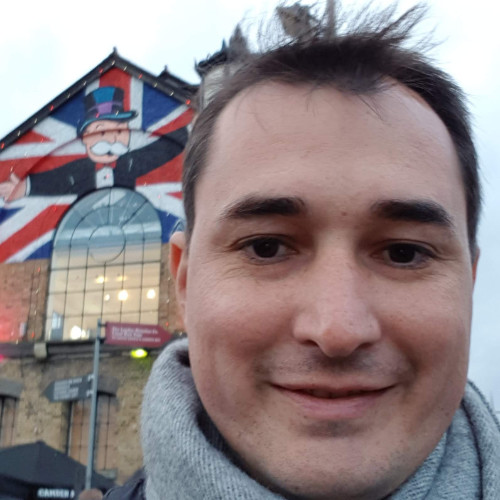
João Veríssimo
Business Analyst Leader
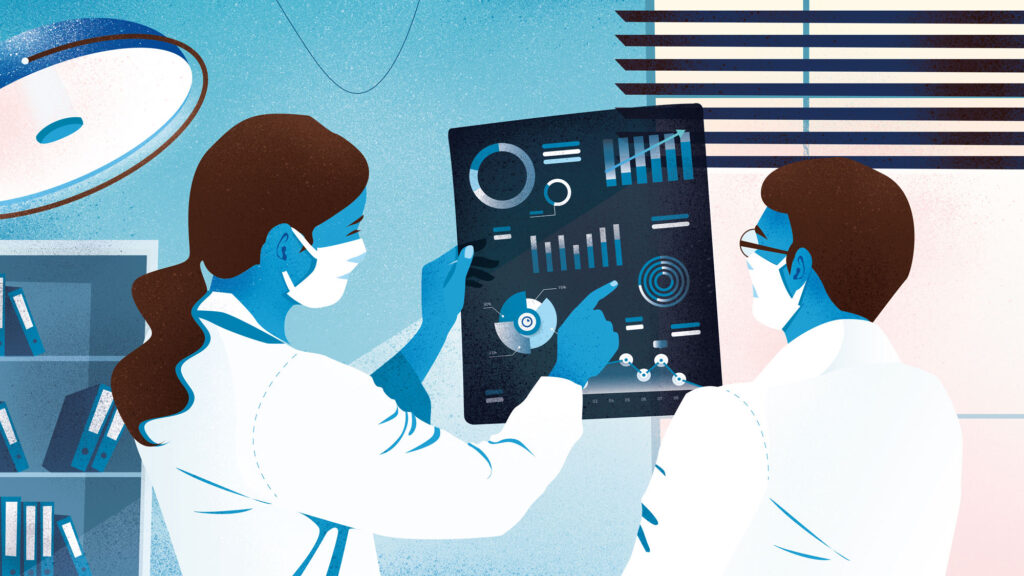
The Process
What wasn’t mentioned yet is that Softplan counted with amazing people – the most brillant one’s I’ve ever met. And that was the key success factor rather than this pretentious writer!
During the following 2 years a set of agile transformation at Softplan’s operations took place, supported by an extensive training program. A first move was a management injection. The power in the big dev teams were clearly inclined towards business analysis. Even the head of’s were all the business experts, rather than people experts. All this in detriment of development and QA (Quality Assurance). To re-equilibrate this balance and establish the proper policies for the handovers between them, 3 divisions were created and teams were divided in silos:
Business teams
Development teams
QA – Quality Assurance teams
The separation resulted in smaller teams and opportunities for new leaders, with fresh ideas. After around one year, despite the natural friction in the frontier of each silo, the perviously weak disciplines (development and QA) got stronger by the new leadership and new policies:
Requirements should have a minimum standard. There was a checklist to run.
QA team should be involved early in the process, so they could define testing strategy in advance.
Manual testing just start after an evidence of automated tests coverage.
Cap limits and throttled demands were agreed (in contract) preventing teams to be overloaded.
The silos were already there! What seemed a counterintuitive move helped to make them visible.
The 2nd move
Therefore, a second and now intuitive move in the agile transformation was made: the multidisciplinary teams were formed again, but in small cells and value stream oriented. Inside each new formed cell the conquered policies were preserved, which in turn preserved the balance of power previously conquered. Moreover, business experts were mostly repositioned from leadership to new positions as SME – subject matter experts. The organisation started to get used with people oriented leadership.
The Training Program
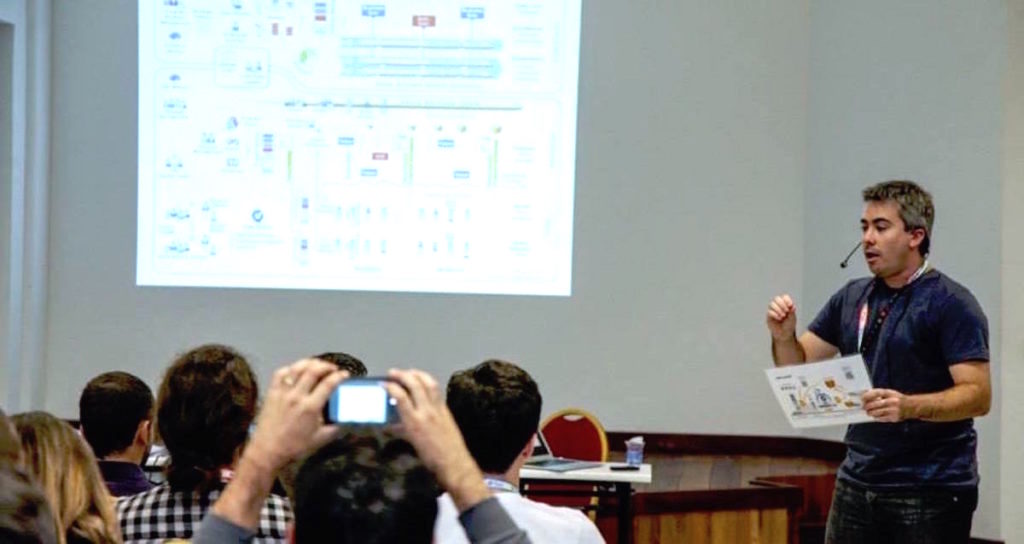
The reorganisations were the key element, imho, but it wasn’t just about moving people from one side to another. Much more was done in parallel to make sense of all this, such as contracts’ renegotiation; bad clients expurgated; bad leaders expurgated; adoption of a new set of ALM – Application Lifecycle Management tools; and finally a huge training program.
The goal of the training program was to enable literally everyone to understand, participate and ultimately lead the changes happening in the organisation. In a period of 2 years, more than 200 people took part of a role-based training program with certification, completing 540 hours. The portfolio of training spread accros the following classes:
7 workshops Kanban for Teams
4 classes of Leading SAFe with SAFe Agilist certification
3 classes for Agile Coaches with certification
3 classes for Product Owner & Product Manager with certification
4 classes with the new processes applied with the chosen ALM – Application Lifecycle Management tool
The 3rd move
In parallel with the latests trainings, those with support from the new tools, the end-to-end cells started to be formed. Still counting with some few shared teams, but mostly the organisation became totally value stream oriented.
21
Classes
Role-based trainings for everyone: leaders, business, devs, support…
+200
People
Trained to understand, engage and even lead the transformation.
540
Training hours
During the period of 2 years.
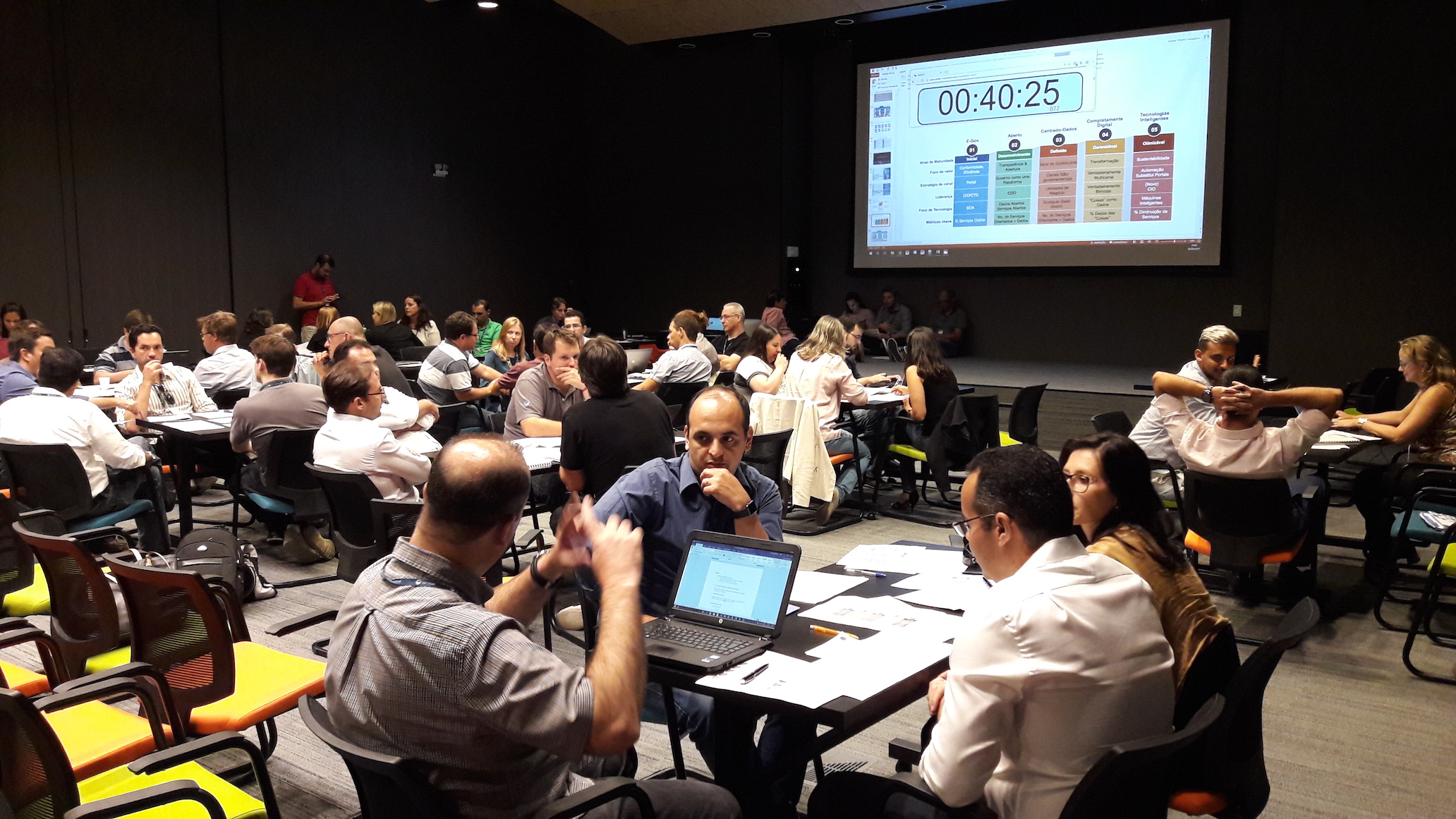
Conclusion
Such a great transformation isn’t done with one big shoot! It’s more like a guerrilla mode, with several action tackling small/medium topics but all coordinated for a common goal. Softplan lost or let some customers go; conquered new ones under a new contract framework where demands were throttled; changed leadership profile from business experts to people leaders; adopted new ALM and a new Service Desk tools; settled new performance indicators; and created a mode 2 operation where innovation was explored separately from the legacy business. Nonetheless, the most significant ones imho were the organisational changes and the supporting trainings.
Organisational moves
One step back and two steps forward: a first counterintuitive step broke the forces that were holden the company in an old era of leadership and opened space for people leaders and the rise of technical quality on development and QA disciplines. The following steps formed end-to-end value stream teams, with minimal dependency to shared teams and maximum autonomy.
Training program
A big set of trainings prepared people for a smooth agile transformation. Starting from leaders, they could join the changing coalition and helped promoting the changes since the beginning. Then role by role, team by team, everyone was invited to embrace changes in processes, tools and mindset.
+130%
Productivity
Measured in effort per function points along the 2 years of transformation.
20%
Growth per year
Increasing demand required new levels of productivity.
Get to know the alternative path to agility with official TKP and KMP certifications from Kanban University.



